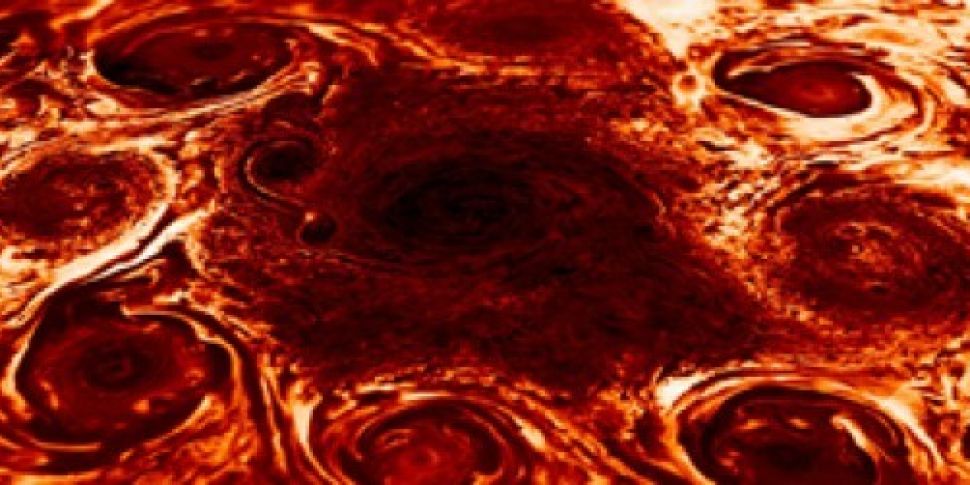Data from NASA's Juno spacecraft has revealed 'astonishing' detail about the composition of the giant planet.
The details have been revealed in a series of four articles for the journal Nature, which analyse data from the probe's mission to the gas giant.
The Juno spacecraft has travelled more than 200 million kilometres as part of its mission to discover details about Jupiter's origins, structure, magnetosphere and weather layer.
Analysing data sent by the probe, researchers have found that that Jupiter's atmospheric winds run deep into its atmosphere, and last longer than similar atmospheric processes on Earth.
Massive cyclones that surround the planet's two poles, meanwhile, are said to be unlike anything else encountered in the solar system.
Elsewhere, scientists have also discovered more details about Jupiter's 'asymmetrical' gravity field, as well as information about the depths of the planet's recognisable 'coloured bands'.
Those bands - or jet streams - extend to a depth of 3,000 kilometres, which is said to be 'much deeper' than expected.
According to Juno co-investigator Yohai Kaspi, the new information about the planet's distinctive stripes is "like going from a 2-D picture to a 3-D version in high definition".
The data has also suggested that the planet rotates 'nearly as a rigid body' underneath its weather layer - a discovery described as an 'amazing result' by Tristan Guillot, a lead author of one of the four papers.
Speaking about the findings, Scott Bolton - the principal investigator of Juno from the Southwest Research Institute in San Antonio - explained: "These astonishing science results are yet another example of Jupiter’s curve balls, and a testimony to the value of exploring the unknown from a new perspective with next-generation instruments.
"Juno is only about one third the way through its primary mission, and already we are seeing the beginnings of a new Jupiter."
The Juno probe was launched in August 2011, and entered a polar orbit of Jupiter just under five years later.
When its mission is complete - currently planned for July of this year, although it may be extended - the probe will intentionally be crashed into the planet, the same fate as its predecessor probe Galileo.









